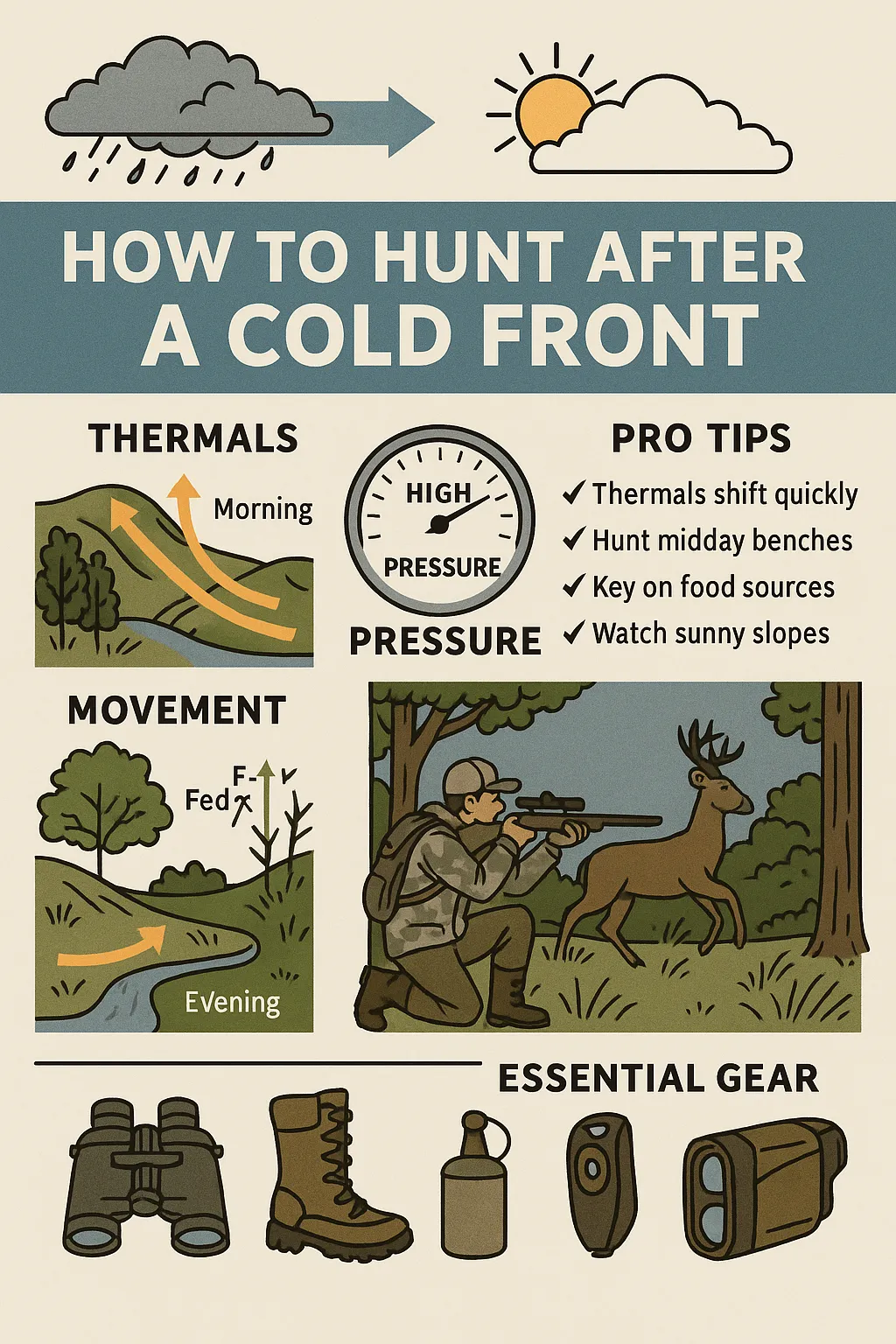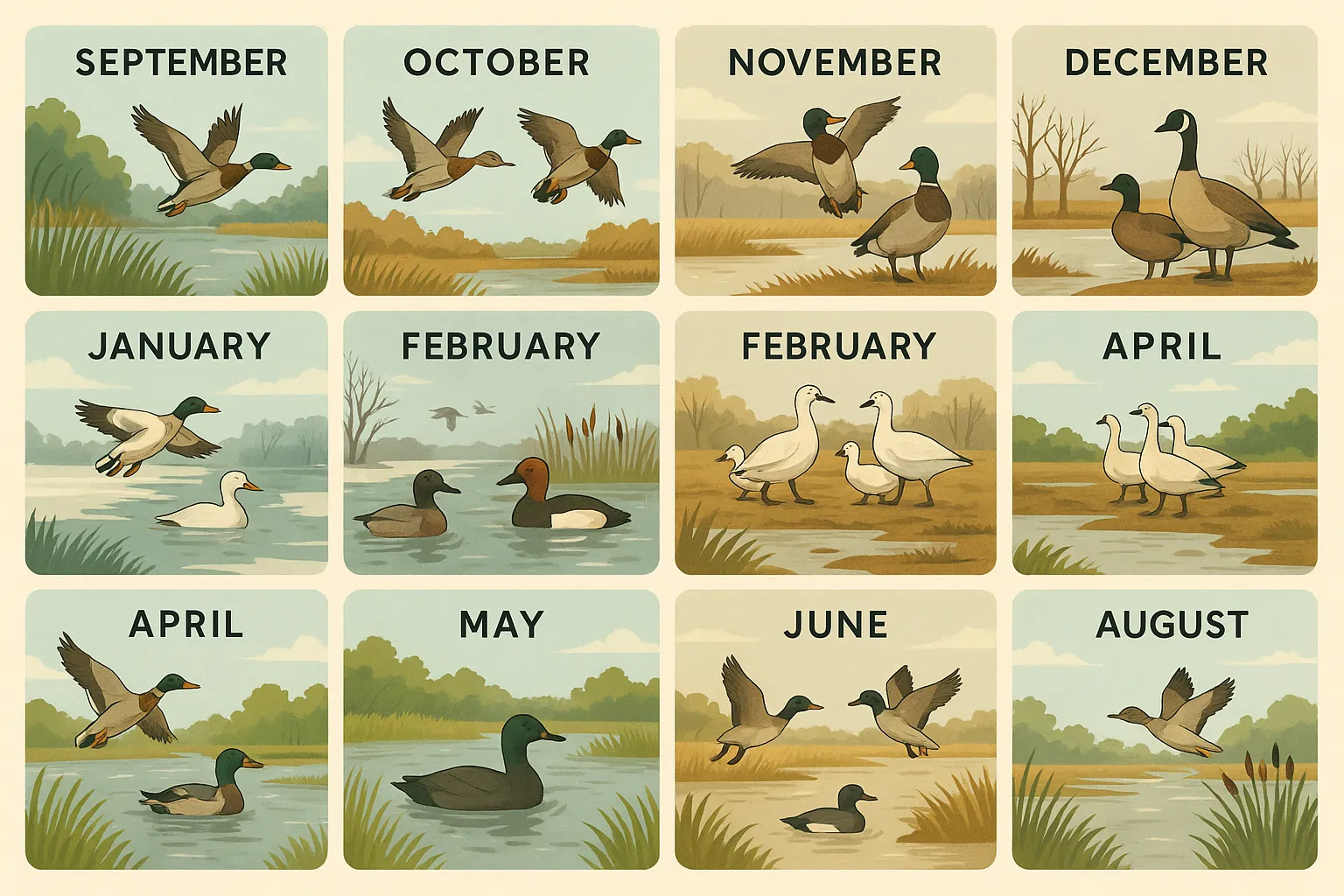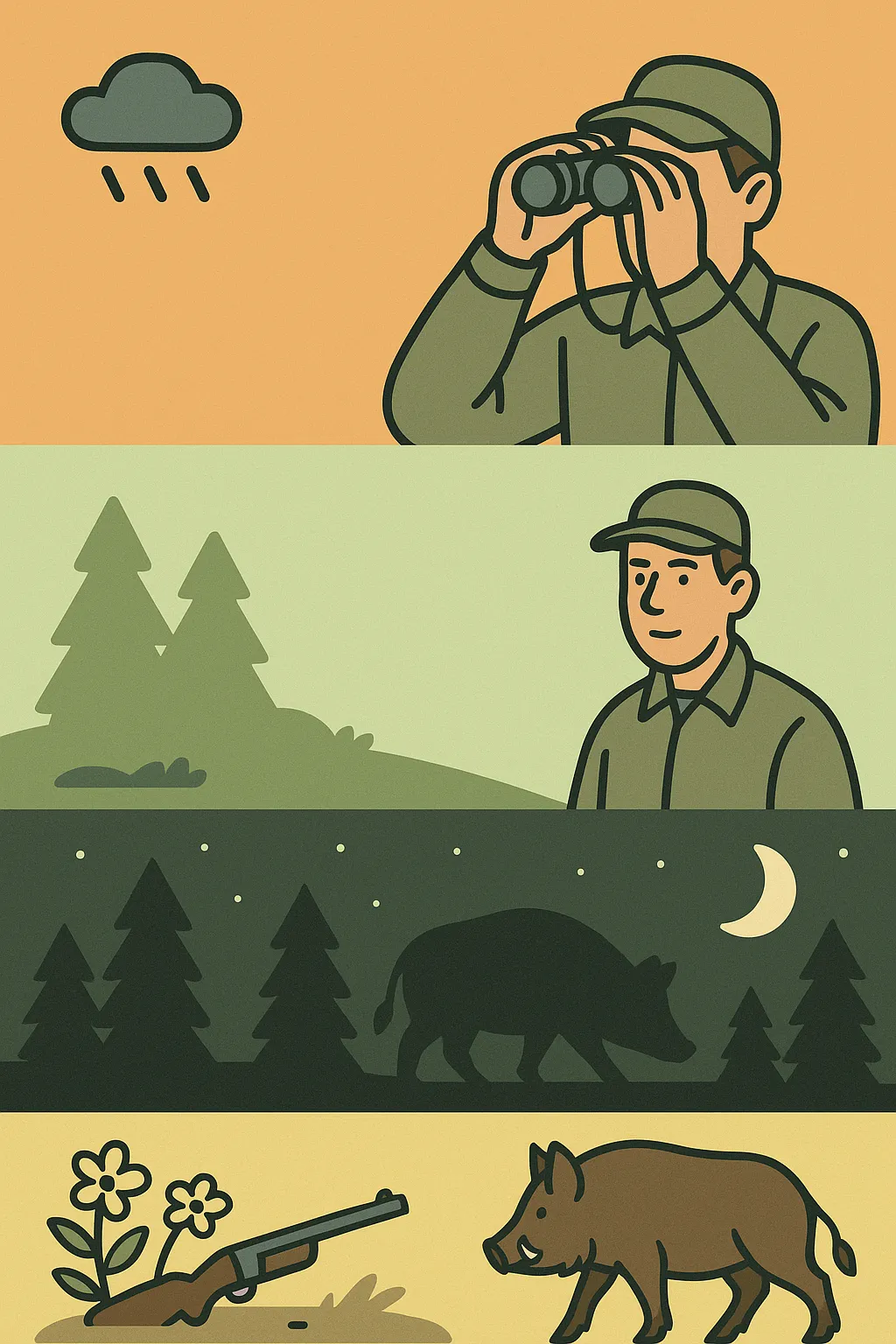
How to Adapt to Late-Season Mule Deer Behavior
When the mercury drops and the mountains quiet down, late-season mule deer hunts test grit, patience, and planning like no other. With snow on the ground and pressure high, bucks become elusive—yet also more predictable. Here’s a breakdown of how experienced hunters are shifting their tactics to connect with post-rut, cold-weather muleys in 2025.
❄️ Understand Late-Season Behavior
🧠 Mule Deer Mindset:
- Bucks are recovering post-rut: worn down, cautious, and feed-driven
- Bedding low on south-facing slopes for sun and warmth
- Movement centers on thermal cover and food (juniper, ag fields, winter range)
🎙️ “Once the rut ends, food is king. Find the feed, and you’ll find the bucks.”
— Jordan R., Wyoming
🔭 Strategy 1: Glass From Distance, Hunt From Patience
🎯 Key Tactics:
- Long-range glassing at first and last light
- Focus on sunlit slopes, open benches, and wind-sheltered draws
- Avoid busting bedding areas—watch, wait, and move slow
📍 Tools of the Trade:
- High-quality spotting scope (20-60x)
- Tripod-mounted binos
- GPS-pinned glassing knobs and escape routes
🎙️ “Late season is about watching them three days before you ever make a move.”
— Lisa K., Montana
🌲 Strategy 2: Focus on Thermal & Wind Advantage
🧭 Environmental Adjustments:
- Prioritize south- and east-facing slopes for bedding
- Hunt windward routes near bedding to avoid thermals blowing uphill
- Use snow tracking to verify movement patterns (beds, feed, trails)
🎙️ “Thermals still shift in late season—especially on sunny days. Don’t get lazy.”
— Nate S., Colorado
🥾 Strategy 3: Go Light, Stay Long
🏕️ Field Endurance:
- Bring hot food, insulated pads, and multi-layer kits
- Set up glassing points that allow half-day sits
- Use ultralight camp gear to bivy if weather shifts
🧰 Must-Have Cold-Season Additions:
- Merino/synthetic hybrid base layers
- Insulated water bladder cover
- Stove or jetboil for hot meals
- Snow gaiters + insulated boots
🎙️ “A warm sit = a longer sit = more buck sightings. Comfort equals discipline.”
— Rachel T., Utah
Pro Tips for Tagging a Late Muley
- Map winter migration corridors weeks before season
- Don’t shoot the first fork—mature bucks often trail late
- Use terrain to your advantage—drop in behind benches or shadowy drainages
- Play the clock—bucks often rise midday during cold snaps
🎙️ “I killed my best buck at 1:12 PM. Never left his bed until the clouds broke and the sun hit.”
— Marcus J., Nevada
📣 Resources & Late-Season Communities
- Apps: OnX Hunt (migration overlays), BaseMap Winter Access Tools
- Videos: Muley Freak Late Season Masterclass, Hushin Cold Weather Strategies
- Forums: Rokslide, MuleyMadness, DIY High Country Hunters
Pro Tip: In the late season, movement is minimal—but patterns are gold.
🌟 Final Shot: Outsmart, Outlast, Outglass
Late-season mule deer hunts are chess matches. If you prepare for the cold, study the terrain, and glass more than you move, your chance to tag a gray-ghost giant only goes up. The hunt is quieter—but the reward is louder than ever.
“In winter, bucks don’t go far—but neither should your discipline.”
Leave A Comment
Related Posts
How to Hunt After a Cold Front: Pressure, Thermals & […]
Hunting Waterfowl in the Mississippi Flyway: Monthly Breakdown The Mississippi […]
Southeastern Hog Hunting Tactics by Month Feral hogs in the […]





